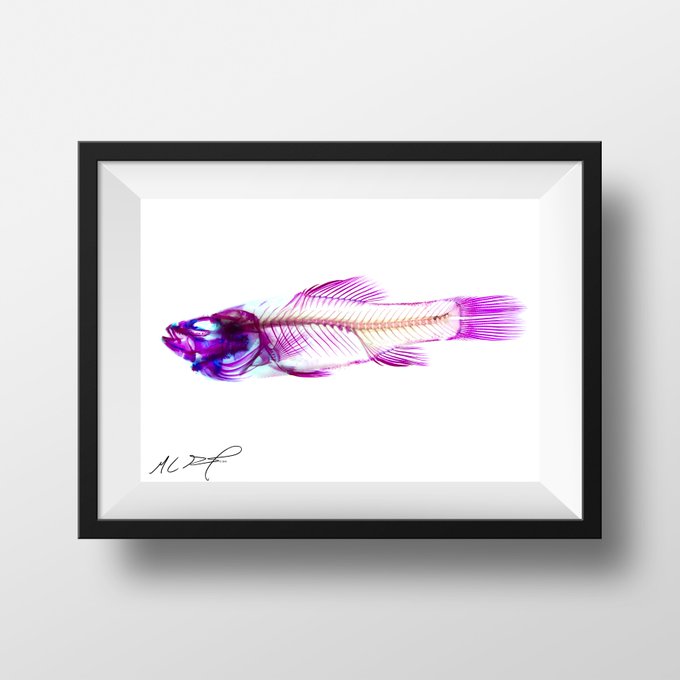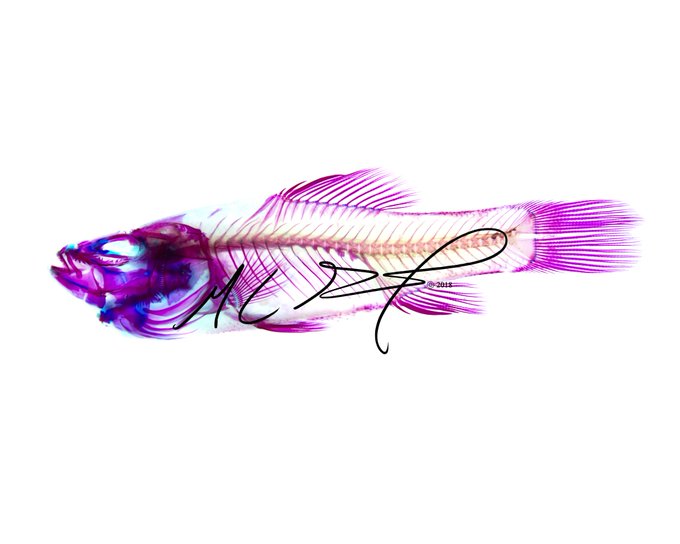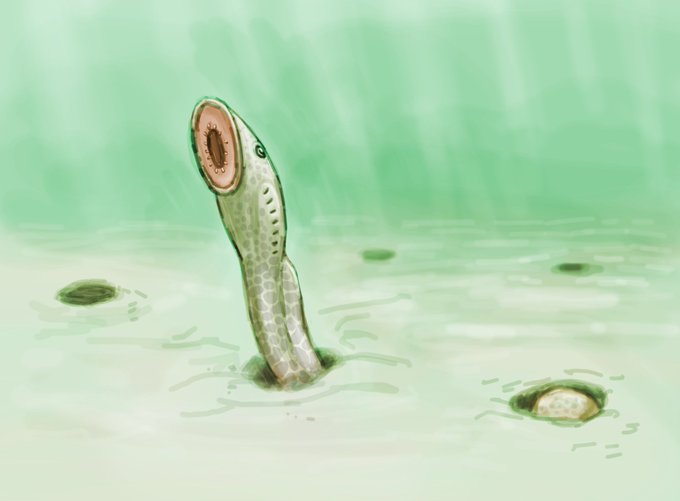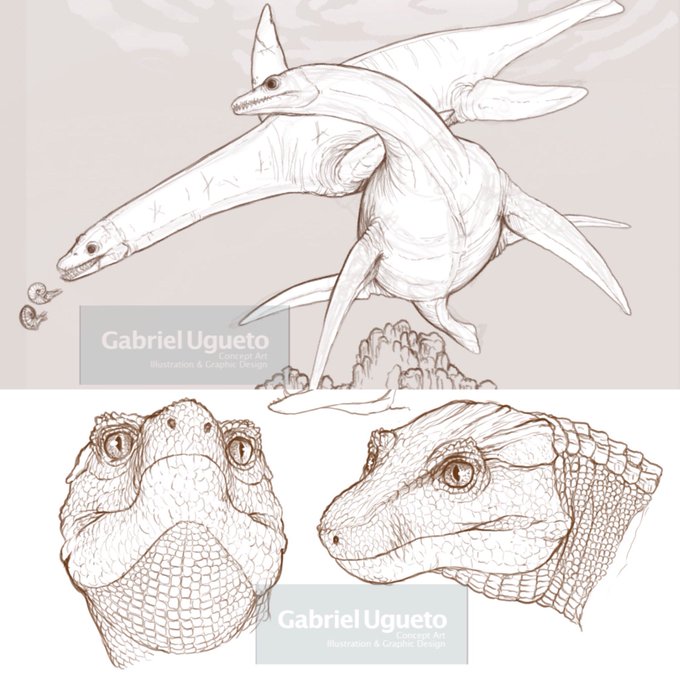SCIARTのTwitterイラスト検索結果。 6,574 件中 250ページ目
#inktoberday12 – Whale
Pithovirus sibericum is a whale of a #virus at 1.5um long – it’s bigger than some bacteria and can be seen under a light microscope! It was found intact within a 30k yr old Siberian ice core and can still infect amoebas.
#inktober2018 #microbiology #sciart
Hi, I'm Ciléin - a doctor and freelance medical illustrator drawing from a background in video games dev to explore health & disease. Check out my portfolio: https://t.co/PGyssgj0cj and Patreon: https://t.co/dYefLPFIjz #portfolioday #scicomm #sciart #healthcare #medicine
I never liked the image quality of the pirate perch I had created. So, I did it again, from scratch. New image stacks, new lighting method, different camera settings. I am much happier with how this turned out. #Fish #Photography #SciArt #Anatomy
#WorldOctopusDay
Octopuses Are Amazing: are about 90% muscle; have 3 hearts & blue blood; have teeth on their tongues; play with toys; two-thirds of an octopus’ neurons reside in its arms; the octopus's mouth is in its armpits...
#Octopus #Cephalopod #Sciart #Biology
Inktober Day 6: Drooling. The Edible-nest Swiftlet builds a nest almost purely out of hardened saliva attached to a wall - and these little palm-sized cups of solidified spit are the source of bird's nest soup in Southeast Asia. #inktoberday6 #inktober2018 #sciart
Inktober 10/5/2018 Speedball 512 nib 6 X 8 inches #inktober #inktober2018 #sciart #art #artist #artwork #fineart #ink #inkdrawing #linedrawing #gawoski #foraminifer #haeckel #oceanography
In one week I will be hosting Dr. @deborahdp webinar for @iasc_commons 24 hr webinars. Deborah's talk "Indigenous peoples, climate change and the commons" On Oct. 12, at noon UTC -2 Peru. For more info go to: https://t.co/zE8chLOtjs
#sciart #scicomm #WorldCommonsWeek
Thrilled to announce an illustrated book to celebrate the #25genomes project and @sangerinstitute 25th anniversary! The grandest illustration project I have ever done. Such an honour to work here as an artist and a scientist with such fantastic colleagues. #sciart @wellcometrust
Phrenic nerve © 2018 created by Body Scientific for Wolters Kluwer Health. All Rights Reserved. Image protected by Digimarc.
#medicalillustration #medicalillustrationstudio #bodyscientific #bodyscientificinternational #sciart #illustrationoftheday #phrenic #nerve #diaphragm
#InktoberDay3 - Roasted.
Desert water environments are dominated by particular kinds of #bacteriophages (viruses that infect bacteria), presumably because they can handle the roasting environment and drying out better than other #viruses.
#Inktober2018 #microbiology #sciart
...and for the #hummingbirds, it has to be John Gould's sumptuous 'A monograph of the #Trochilidae', with #SciArt by H.C. Richter
Also available on @BioDivLibrary via @SILibraries https://t.co/Ri931uUC4P
#ButterflyAndHummingbirdDay #Libraries #RareBooks
Happy #butterfly and hummingbird day!
My go-to for #SciArt of #butterflies from the @museumsvictoria library is 'The Naturalist's Miscallany'
Our copies are on @BioDivLibrary for all to enjoy! https://t.co/elpNZ4oD7g
#ButterflyAndHummingbirdDay #Libraries #RareBooks
The European aspen (Populus tremula) is native to cool, temperate regions of Europe and Asia. #SciArt from J. Sturm's "Flora von Deutschland", Bd. 4 (1905) by Ernst H.L. Krause. Contributed for digitization by @Kew_LAA: https://t.co/mc1Ck4qV2r #BotanicMonday
Bacteria get sick too! They can catch a special type of virus called a bacteriophage. Read more at the blog: https://t.co/ttLk7VXqbe #scicomm #sciart #science
Highlights from the #paleostream!
Hallucigenia, Priscomyzon, Pelagiarctos and Macroeuphratus eating ass (of Toxodon) #paleoart #palaeoart #sciart
#sundayfishsketch featuring amazon fishes. Growing up in the Amazon was definitely a bless. Here are some of my favorite fishes: tucunaré, Cichla spp., the most iconic fish from my hometown Tucuruí; the pirarucu, Arapaima gigas; and stingrays, Paratrygon aiereba. #scicomm #sciart
My newest painting, "King of the Electric Jungle" is up on Cubelight Graphics (complete with citations)! Come and see it live at the #GallimaufricScience art show Oct 5th @indigotealounge #sciart #paleoart #80s #tyrannosaurus #dinosaur #retro #vaporwave https://t.co/VJwZCHBlS6
Two for the price of one! Michaelmas Daisies (left) and Amaranth (right) are both in bloom in my part of the world. Michaelmas Daisies (Aster amellus) are named for the feast of St. Michael, which is observed on September 29. #HistSciArt #BotanicalIllustration
Red-Headed Lovebird (Agapornis pullarius). #SciArt by Frederick Polydore Nodder for George Shaw, Naturalist's Miscellany, Vol. 1 (1789-1813). Contributed to #BHLib by @bhl_au and @museumsvictoria: https://t.co/NBa3R4YZhk #birds #birbs




















































